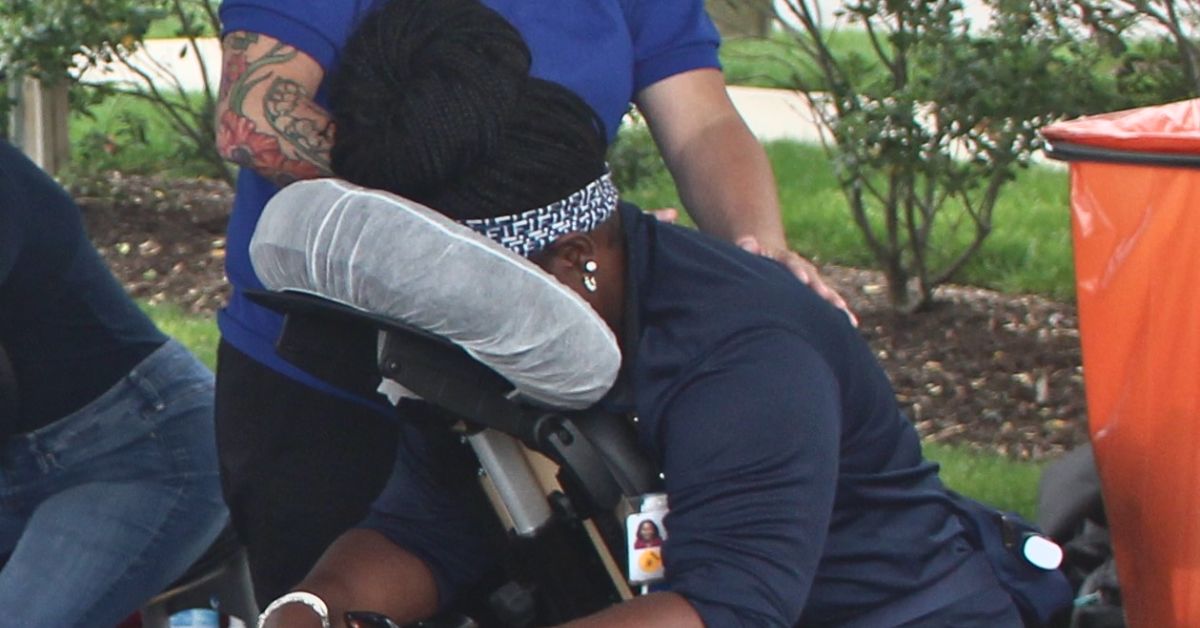Different Types of Corporate Massage Services Available

Different Types of Corporate Massage Services Available
Long working hours, tight deadlines, and endless virtual meetings—corporate life can be stressful. Self-care often takes a backseat for professionals sitting at desks for hours or managing a company full of employees. The result? Burnout, lower productivity, and decreased job satisfaction.
The good news? Corporate massage services are revolutionizing workplace well-being. Designed to bring relaxation, recharge energy, and reduce stress, these services aren’t just perks—they’re tools that boost employee morale and overall performance. We’ll explore the different types of corporate massage services available and their various benefits.
What Are Corporate Massages?
Corporate massages are on-site massage services specifically tailored for the workplace. Businesses hire trained professionals to provide massages that employees can enjoy during their workday. The sessions are designed to fit seamlessly into corporate schedules, usually ranging from 10 to 20 minutes per session, and do not require undressing or the need for oils or creams.
These massages aim to alleviate physical tension caused by prolonged sitting or repetitive tasks while promoting mental relaxation. Delivered right in the office, they’re an accessible and effective way for companies to prioritize employee well-being.
The Benefits of Corporate Massages
Corporate massages offer many benefits for employees and employers, making them a worthwhile investment in workplace wellness. For employees, these massages are an effective way to reduce stress and alleviate muscle tension. In today’s work environments, stress often leads to burnout, but regular massages can leave employees feeling more relaxed, energized, and ready to tackle their tasks.
They also address common work-related physical discomfort, such as neck and shoulder pain caused by prolonged hours at a desk. Beyond the physical benefits, employees feel valued and appreciated when companies provide wellness perks like massages, fostering a sense of care and support from their employer.
The physical and mental benefits of corporate massages go hand in hand with improved performance. Employees who experience reduced stress and pain are often more focused and productive throughout their workday. Better posture and minimized aches can lead to fewer distractions and a greater ability to concentrate on tasks. Additionally, providing such benefits sends a strong message about workplace priorities, creating a healthier and more positive environment where people feel supported in their roles.
For employers, the advantages extend beyond improved productivity. Offering corporate massages can result in higher employee engagement and retention rates. When employees feel cared for, they are more likely to develop loyalty to the company, reducing turnover and developing a stronger, more cohesive workforce.
A happier, healthier team also contributes to a positive company culture and can enhance the overall morale of the workplace. Therefore, corporate massages support employee well-being and contribute to a thriving organization.
Different Types of Corporate Massages
Whether you’re an HR manager looking for a way to support your team or a professional exploring ways to recharge at work, corporate massage services come in all shapes and styles. Here’s a breakdown of the most popular types of corporate massages and how they cater to different needs.
Chair Massage
Chair massages are a go-to choice for busy offices. Performed on a specially designed chair, these massages are short yet effective, focusing on the back, neck, shoulders, and sometimes arms. They’re usually done fully clothed, making them convenient and non-intrusive. Whether it’s a quick 15-minute session or part of a wellness day, chair massages provide instant relief from tension.
Hand and Arm Massage
Hand and arm massages can be a game-changer for employees spending endless hours typing away. These massages specifically target tension and strain in the hands and forearms, reducing discomfort and boosting circulation. They’re a fantastic way to alleviate wrist pain or the early symptoms of repetitive strain injuries.

Neck and Shoulder Massage
Poor posture from hours of sitting often leads to tightness in the neck and shoulders. This massage focuses on relieving that tension, promoting better posture, and reducing the “tech-neck” effect caused by staring at screens all day. It’s a targeted yet effective solution for modern workplace stressors.
Acupressure Massage
Acupressure offers a unique approach, using gentle yet firm pressure on specific points of the body. This technique doesn’t require oils or lotions, making it simple to carry out in office settings. Acupressure relieves physical pain and promotes energy flow and emotional balance.
Common Massage Techniques in Corporate Massages
Corporate massage services often incorporate various techniques to cater to employees’ preferences and needs. Here’s a quick overview of some common styles you might encounter.
Swedish Massage
Swedish massage is the gold standard of relaxation, known for its ability to soothe both the body and mind. This technique promotes deep relaxation and overall well-being with its gentle, flowing strokes, kneading, and circular movements. In addition to calming the mind, it improves blood circulation, helping to deliver oxygen and nutrients more efficiently throughout the body. It’s a favorite choice for anyone looking to relieve muscle tension while enjoying a peaceful, calming experience.
Sports Massage
Designed for athletes but equally beneficial in the workplace, sports massage techniques are all about improving physical well-being. These techniques focus on enhancing flexibility, preventing injuries, and reducing muscle fatigue, making them valuable for maintaining peak performance. For employees, this approach can be especially helpful in combating the physical toll of long hours spent at a desk or in high-stress environments. By incorporating sports massage into workplace wellness routines, companies can help their teams feel energized, healthier, and more productive.

Deep Tissue Massage
Deep tissue massage uses firm pressure to target the deeper layers of muscle and connective tissue, making it a powerful therapeutic technique. It is particularly beneficial for individuals dealing with chronic tension, pain, or muscle stiffness, offering targeted relief where it’s needed most. Although the technique can be intense, it effectively addresses persistent discomfort and promotes overall wellness. After a session, employees often feel revitalized, relaxed, and better equipped to handle the demands of their day.
Experience Massage Services with Massage At Work
For corporate professionals and HR managers, introducing workplace massages isn’t just a feel-good initiative—it’s a strategy to boost well-being, morale, and overall productivity. Understanding the different types of corporate massages available can help you make the best choice for your workplace.
If you’re ready to bring some much-needed relief to your team, contact Massage At Work today for our company massage services. We can help make your office a haven of relaxation and productivity.
Categories
Recent Posts
The Impact of Poor Posture on Productivity and Health
17th Jun 2025A History of Massage in Workplace Wellness Programs
15th Apr 2025The Science Behind Workplace Stress and Muscle Tension
26th Mar 2025 A Certified LGBT Business Enterprise ®
A Certified LGBT Business Enterprise ®© 2025 Massage At Work USA, LLC. The Corporate On-Site Massage Professionals™. All Rights Reserved.
